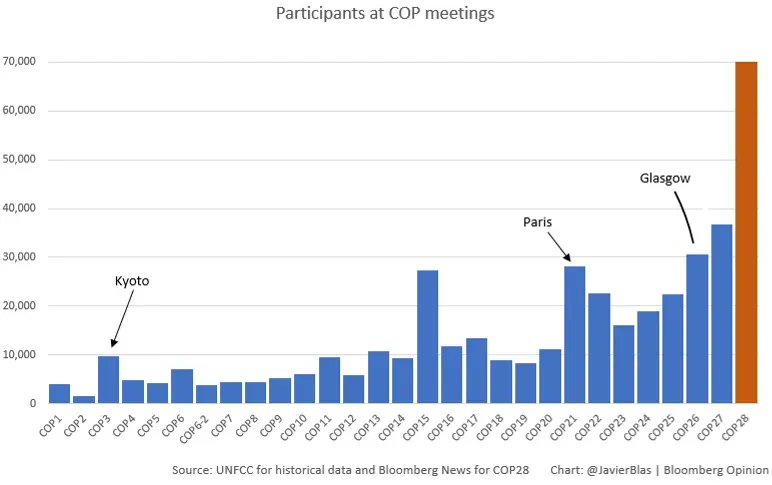Roger Pielke Jr. on Chris Wright: Energy Realism & Climate Pragmatism at the Dept of Energy – ‘Wright pulls no punches when characterizing the state of public discussion of climate change, & he is not wrong’
https://rogerpielkejr.substack.com/p/energy-realism-and-climate-pragmatism By Roger Pielke Jr. Excerpt: He’s a climate denier! That is the standard reaction of many in the climate lobby when encountering views on climate and energy deviating from the monomaniacal view that climate is the world’s single-most important issue. Reactions from climate advocates to the nomination of Chris Wright,1 CEO of Liberty Energy, to serve in Donald Trump’s cabinet as Secretary of Energy have followed this tired and lazy pattern. Here are some examples: Rep. Sean Casten (D-IL): “Chris Wright is a climate denier who prioritizes the wants of energy producers over the needs of American consumers.” Sierra Club: “Chris Wright is a climate denier who has profited off of polluting our communities and endangering our health and future.” The Washington Post: “Climate crisis skeptic is Trump’s top energy pick”2 What even is a “climate crisis skeptic”? The irony here is that Wright’s views on energy and climate, which he has expressed often and in detail, are largely consistent with the findings of the Intergovernmental Panel on Climate Change (IPCC). The views of his critics? Not so much. Let’s take a look at what Wright has said about climate change in a recent 180-page report called Bettering Human Lives. Wright acknowledges two fundamental realities — climate change is real and fossil fuels have enormous benefits: The expansion of the global energy supply by adding fossil fuels has greatly improved the human condition; it also brought the risk of climate change caused by increased atmospheric levels of carbon dioxide and other greenhouse gases. Wright’s plain vanilla views on climate change are consistent with the most recent IPCC assessment: Human industrial and agricultural activity increases greenhouse gas concentrations and is contributing significantly to a warming trend that earth has experienced over the past 150 years. Total warming over this period has been about 1.3°C (2.3°F). Wright pulls no punches when characterizing the state of public discussion of climate change, and he is not wrong: Climate change discourse is unfortunately rife with false claims and alarmist proclamations from all quarters. Wright cites the IPCC on extreme weather, which — as THB readers know well — expresses findings that contradict many claims made in support of climate activism: [R]eports from the Intergovernmental Panel on Climate Change (IPCC) actually show no increase in the frequency or intensity of hurricanes, tornadoes, floods, or weather-related droughts. Wright supports pragmatic climate policies that reduce emissions: Two things are required for positive progress on climate change: a sober understanding of the issue and the tradeoffs required, and massive improvements in energy technologies that can deliver low-carbon energy that is also low cost, reliable and secure. Wright clearly differs from many climate activists in his view that while climate change poses real risks, it is one of many problems facing humanity, and not a crisis or existential threat: Climate change is a real and global challenge that we should and can address. However, representing it as the most urgent threat to humanity today displaces concerns about more pressing threats of malnutrition, access to clean water, air pollution, endemic diseases, and human rights, among others. As an energy executive, Wright has a deep understanding of the global energy economy, and he calls for “energy sobriety”: Politicians, policymakers, pundits, and the press talk endlessly about how solar, wind, and batteries can transform our whole energy system and address the climate crisis. The reality is that these politically favored technologies have not, will not, and cannot replace most of the energy services and raw materials provided by hydrocarbons. Today they are deployed almost exclusively in the electricity sector, which delivers only 20% of total primary energy consumption. Manufacturing is the largest user of energy globally, mostly in the form of process heat that cannot effectively be supplied via electricity. Further, the ultra-high-power density required for the likes of aviation, global shipping, long-haul trucking, and mobile mining equipment have no viable replacements in sight. Critical materials from hydrocarbons provide nitrogen fertilizer that is responsible for fully half of global food production. In addition, hydrocarbons supply critical materials to produce plastics and petrochemicals that are essential components of modern lives. They also provide asphalt, paints, lubricants, cosmetics, 60% of global clothing fiber, and thousands of other products. Without hydrocarbons we would have no way to produce the vast quantities of steel and cement that undergird our built world. Even wind turbines, solar panels, and batteries are made of hydrocarbon materials and require huge amounts of energy from hydrocarbons to supply the high-temperature process heat required for their fabrication. Energy sobriety is desperately needed. …


